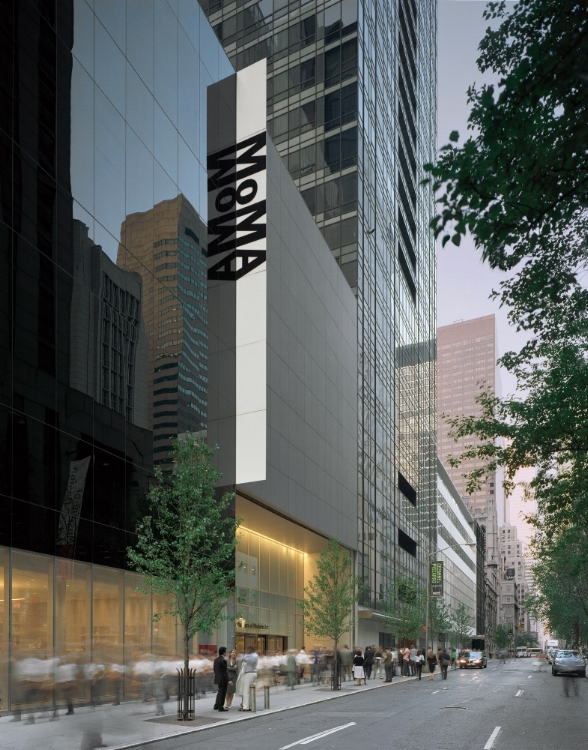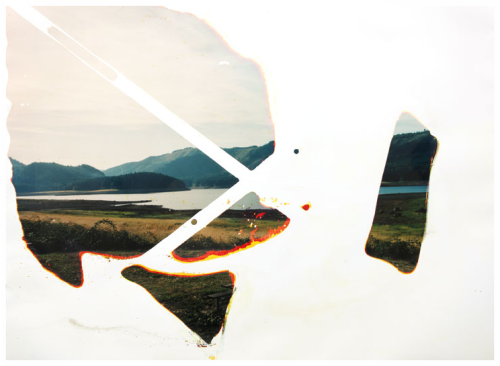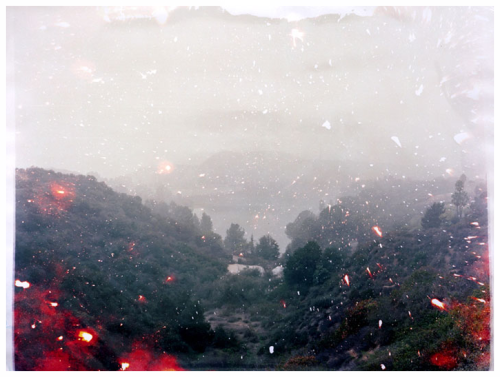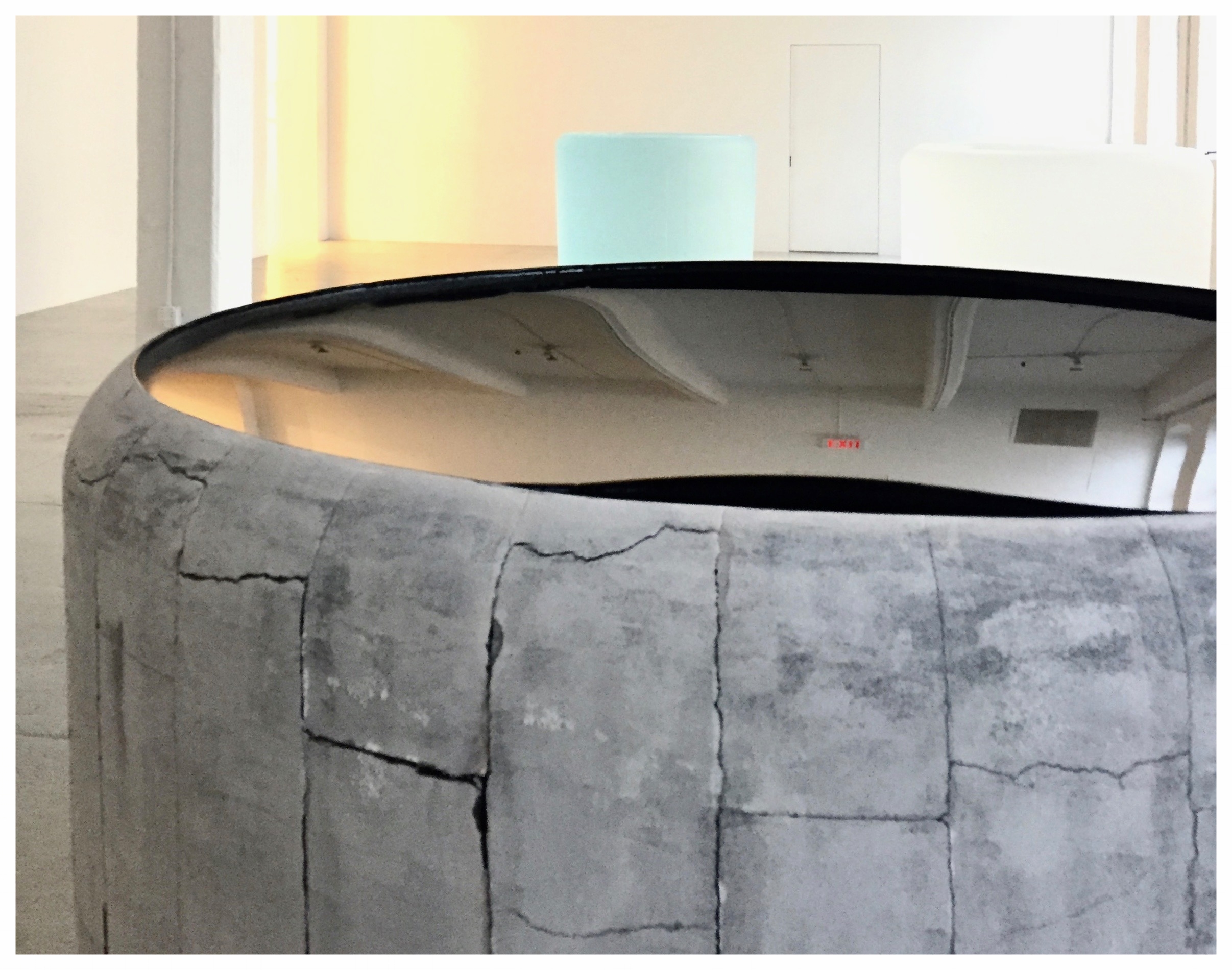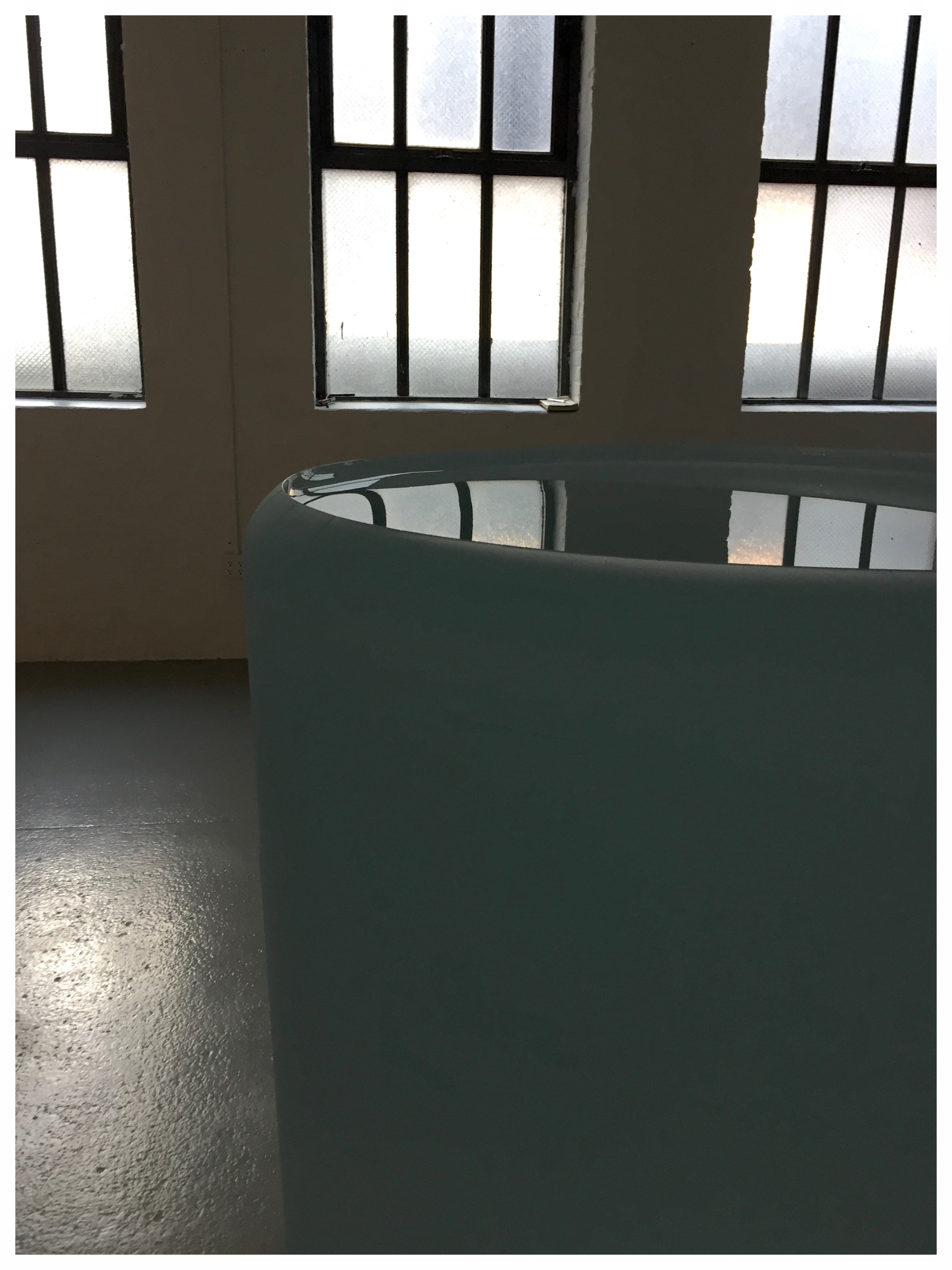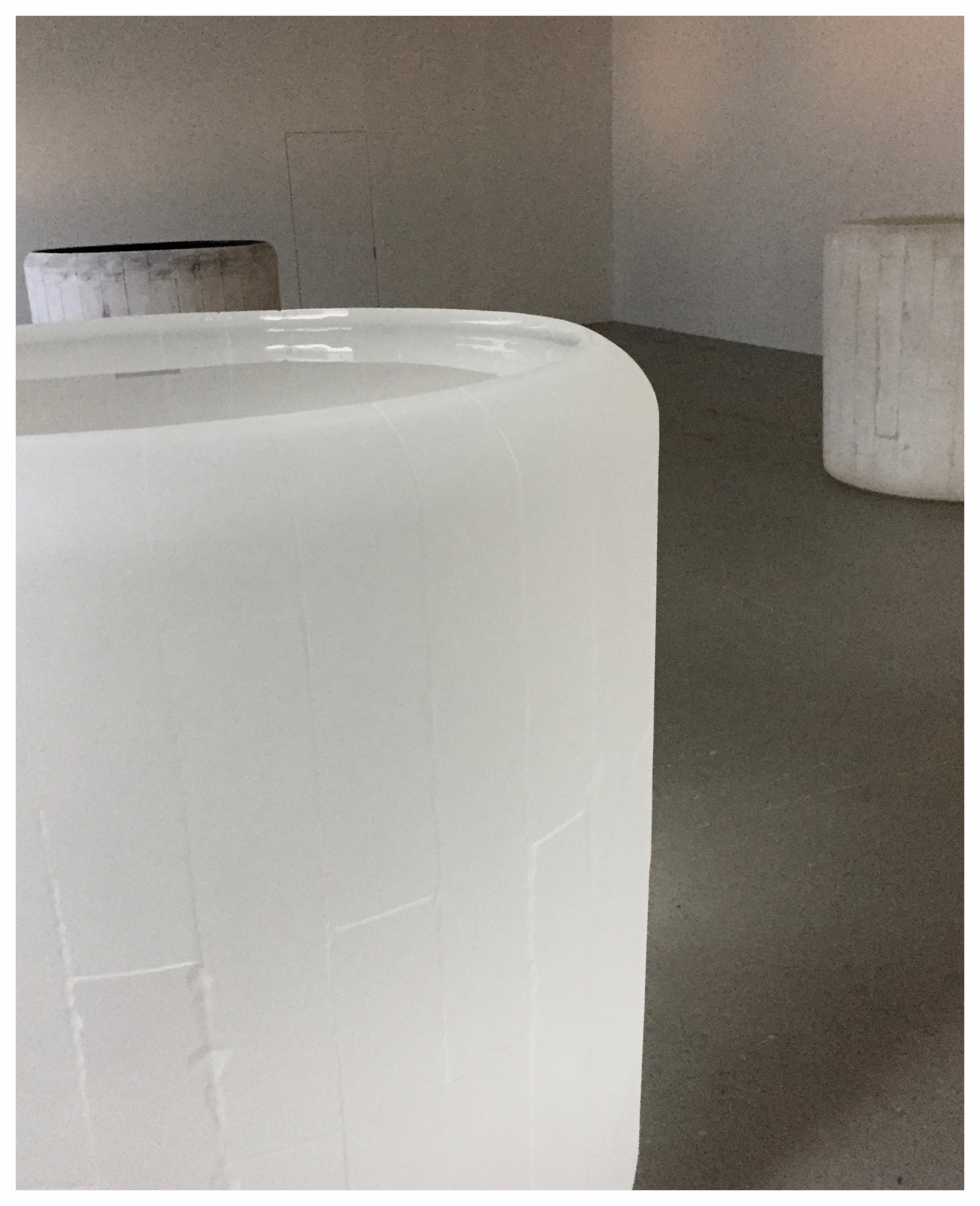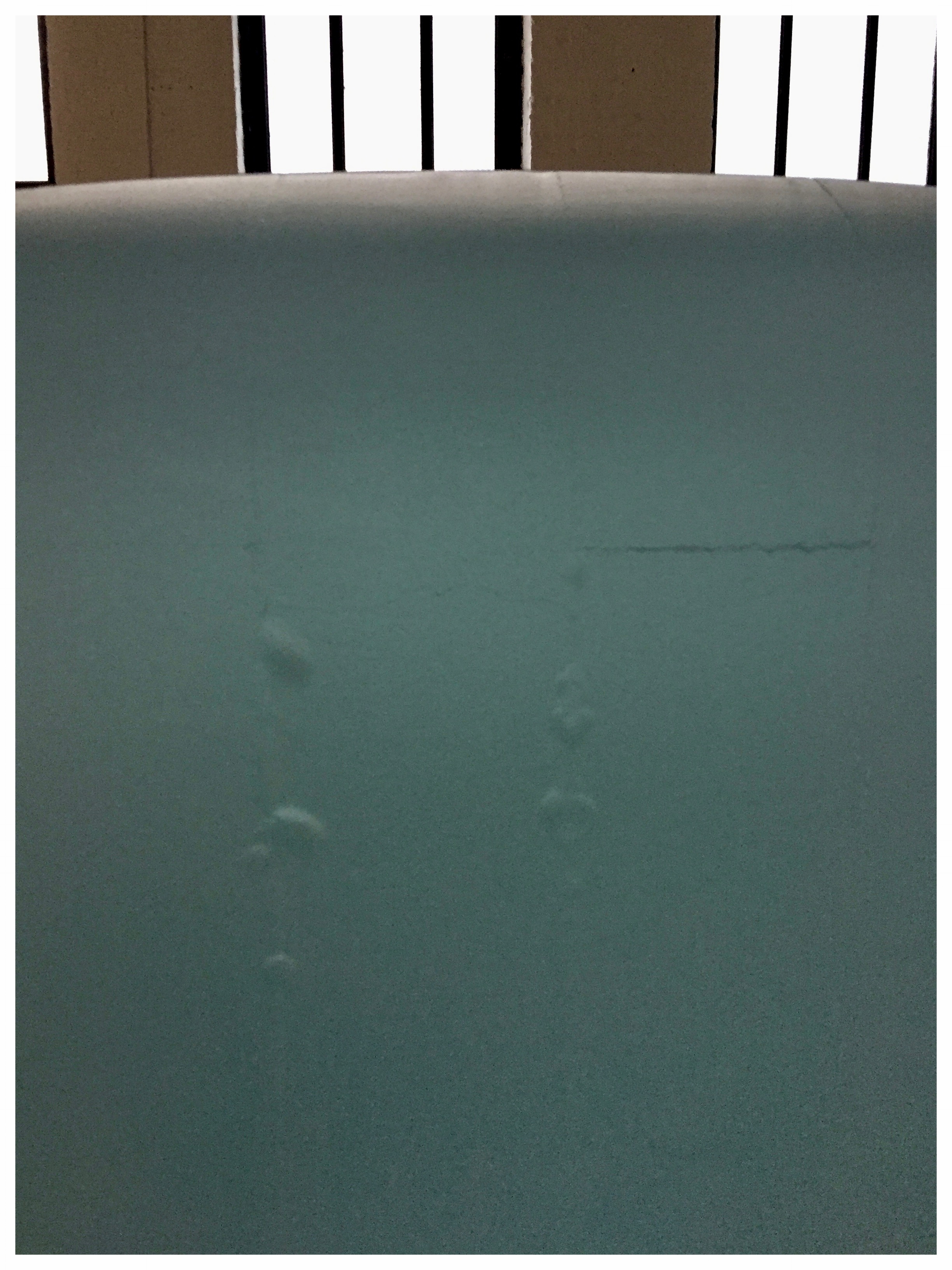When I was a child I had a recurrent dream. I must have been very young, because I remember still feeling that adults were very big and I was very small. I don't recall much of the dream only that the adults in it used to appear with hugely distorted proportions–pin-sized heads on normal-sized, torsos swinging colossal arms around. I can clearly remember the perspective from which I viewed them as well; I was always looking up at them, as if from a bed, and they, in turn, seemed to peer down at me. I don’t recall being afraid, but I don’t think that I was amused either, just terribly confused at the “grownups'” very apparent disfiguration that no one other than myself appeared to notice.
When I discovered Louise Bonnet (b. 1970, Geneva) and her paintings, I was at first thoroughly charmed by them. I had been wandering through an art fair for the better part of the day and was beginning to feel “art sick”. Namely, I was hot, hungry, feeling completely overstimulated by the barrage of images and completely underwhelmed by their quality, and I was getting very, very bored. Simply put, I was thisclose to calling it quits. However, a booth bearing a single painting of Bonnet’s caught my eye. The painting, The Magician (2017), depicts a figure with comically overlarge and crazily unbalanced features, shrouded by a curtain of their own hair, stretching a piece of rope between two fingers. The image is fairly simplistic, but as I spent more time with it the veil of the painting’s humor began to fall away; behind it I found a representation of those same feelings I experienced in my childhood dreams. I felt neither fear nor amusement, horror nor entertainment, but prudent recognition of something I barely recognized myself. This is the space in which I believe art’s very essence lies, in the ability to speak to you or to a condition or to an experience in ways where speech falls short. The messaging behind an artwork does not itself need to be enlightening in order to succeed, it need only to speak to its viewer in a manner that could otherwise not be communicated.
Bonnet currently shows with Nino Mier Gallery in LA where an exhibition of her new work opens March 24.





